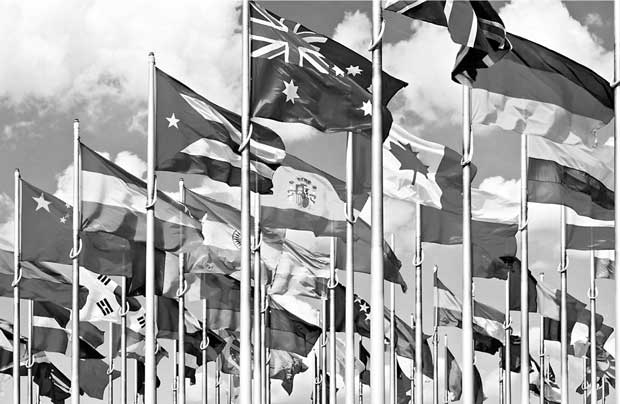16 Dec 2016 - {{hitsCtrl.values.hits}}

By Adam Triggs
In 2010, then US Treasury Secretary Timothy Geithner wrote a letter to G20 finance ministers. He recommended that each country pledge to keep the current account surpluses and deficits within 4 percent of gross domestic product (GDP). His idea was politely rejected, but what Geithner tried to do showed the level of concern among the policymakers about the doubling of the current account imbalances that had occurred in the years after 2000.
Although the current account imbalances wound back sharply with the global financial crisis, they appear to be on the rise once again. This is a pressing concern for the global economy and China’s reform agenda will be a critical part of the solution.
The current account measures the difference between the level of domestic savings and investment in an economy. Many East Asian and European economies have large current account surpluses because they generate more savings than investment opportunities, the former in periods of exceptional growth, the latter in maturity. This surplus of savings goes overseas and finances investment in economies, which are in the opposite situation: which have more investment opportunities than domestic savings. These economies, like the United States, United Kingdom and Australia, have current account deficits.
Measured as a percent of world GDP, the imbalance between these surplus and deficit countries almost doubled between 2000 and 2006. The global financial crisis then reduced these imbalances back to 2000 levels. But in the past two years they have increased once again and are almost back to where they were before the crisis.
Having a current account deficit or surplus isn’t necessarily a bad thing. A country might run a current account deficit because it has strong future prospects, encouraging its citizens to smooth consumption by borrowing today in anticipation of a prosperous tomorrow. Conversely, a country might run a current account surplus because it has an ageing population saving for retirement or because it has a mature economy with fewer investment opportunities so it enjoys more profitable investment opportunities offshore. But the current account imbalances can also be problematic, particularly for deficit countries. Growing deficits raise the risk of a ‘sudden stop’ — a change in sentiment where investors suddenly become unwilling to finance a country’s deficit. International linkages and poor cross-border processes for the resolution of troubled banks and financial institutions means sudden stops can quickly become global events. Economists such as Maurice Obstfeld, Kenneth Rogoff, Ben Bernanke and Mervyn King (the last two former central bank governors) assert that the rise in global imbalances was intimately linked, if not a key cause of, the global financial crisis by fuelling unsustainable booms in credit and asset prices. More recently, Brad Sester from the Council on Foreign Relations has warned that global imbalances are not only making a comeback, but are likely a key contributor to depressed global interest rates, with implications for long-run stability.
Olivier Blanchard and Gian Maria Milesi-Ferretti (from the IMF) warn that in many instances the current account balances are driven by domestic distortions.
For deficit countries, these distortions include poorly regulated financial systems fuelling investment booms or irresponsible fiscal authorities reducing national savings through excessive spending. For surplus countries, the distortions take the form of a lack of social insurance driving up private saving or inefficient financial intermediation leading to low investment.
The focus on distortions highlights why China’s reforms are so important. As a share of world GDP, China’s current account surplus grew tenfold from 2000 to 2007.
Although it has since halved, it has grown rapidly since the crisis and represents almost 60 percent of the US current account deficit. But as Brad Sester points out, the driver of China’s surplus has changed. No longer is it the result of an undervalued currency boosting the trade balance.
Instead, it is the result of substantial domestic savings outstripping investment. Gross national savings in China were 48 percent of GDP in 2015. The average for emerging market and developing economies is 32 percent or 21 percent for advanced economies.
China’s reform agenda will help address many of the distortions that are fuelling its current account surplus. Strengthening the social safety net will reduce the need for precautionary savings. Financial reforms that expand access to insurance products and services will have a similar effect. Capital account liberalisation will mean more investment opportunities for foreigners in China.
A more resilient and market-driven financial system could encourage more Chinese people to keep their money at home rather than trying to invest it at near-zero interest rates overseas. And the rebalancing of the Chinese economy will help reduce trade imbalances between China and advanced economies.
While China is taking the lead, it is by no means the whole of the global story. Northern European current account surpluses are equally large. And advanced economies need to do their part by removing their own distortions: properly regulating financial systems, avoiding unsustainable booms in credit and asset prices and reducing unsustainable levels of public and private debt. As the Chinese proverb goes – when the nest is overturned, no egg remains unbroken – reducing global imbalances will require all countries to do their part.
(East Asia Forum)
(Adam Triggs is a PhD candidate at the Crawford School of Public Policy, The Australian National University)
25 Nov 2024 2 hours ago
25 Nov 2024 3 hours ago
25 Nov 2024 3 hours ago
25 Nov 2024 4 hours ago
25 Nov 2024 5 hours ago